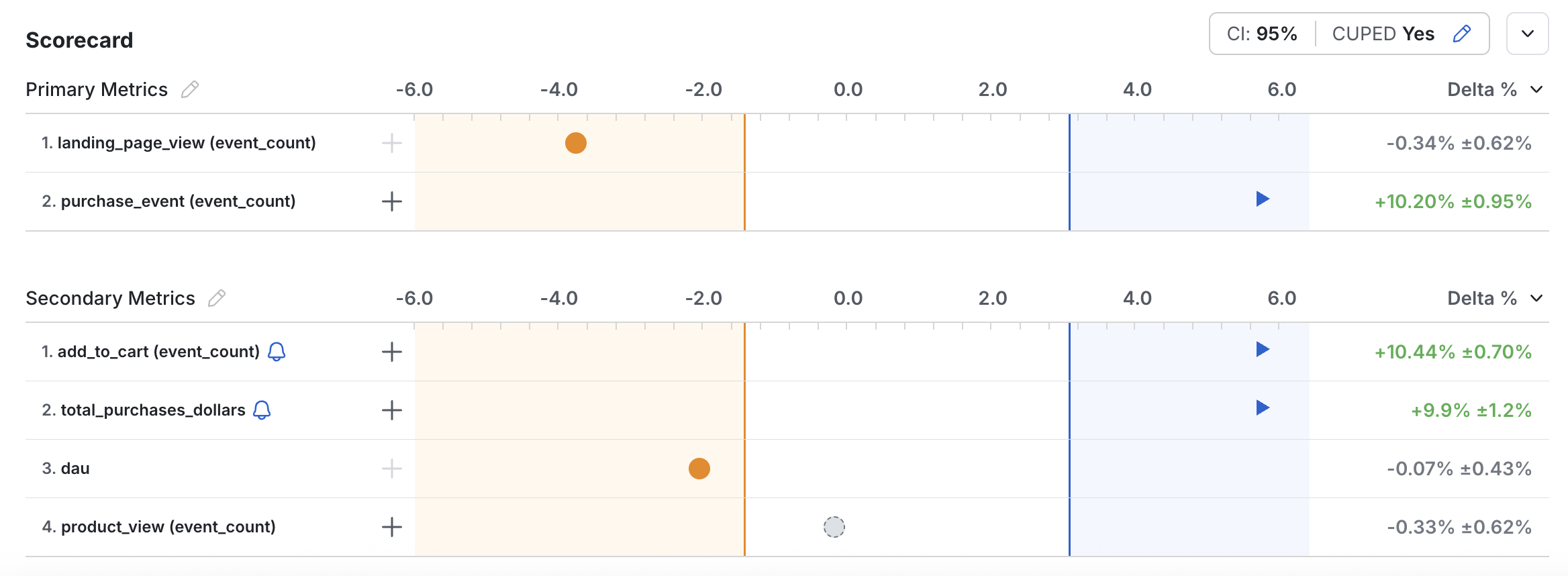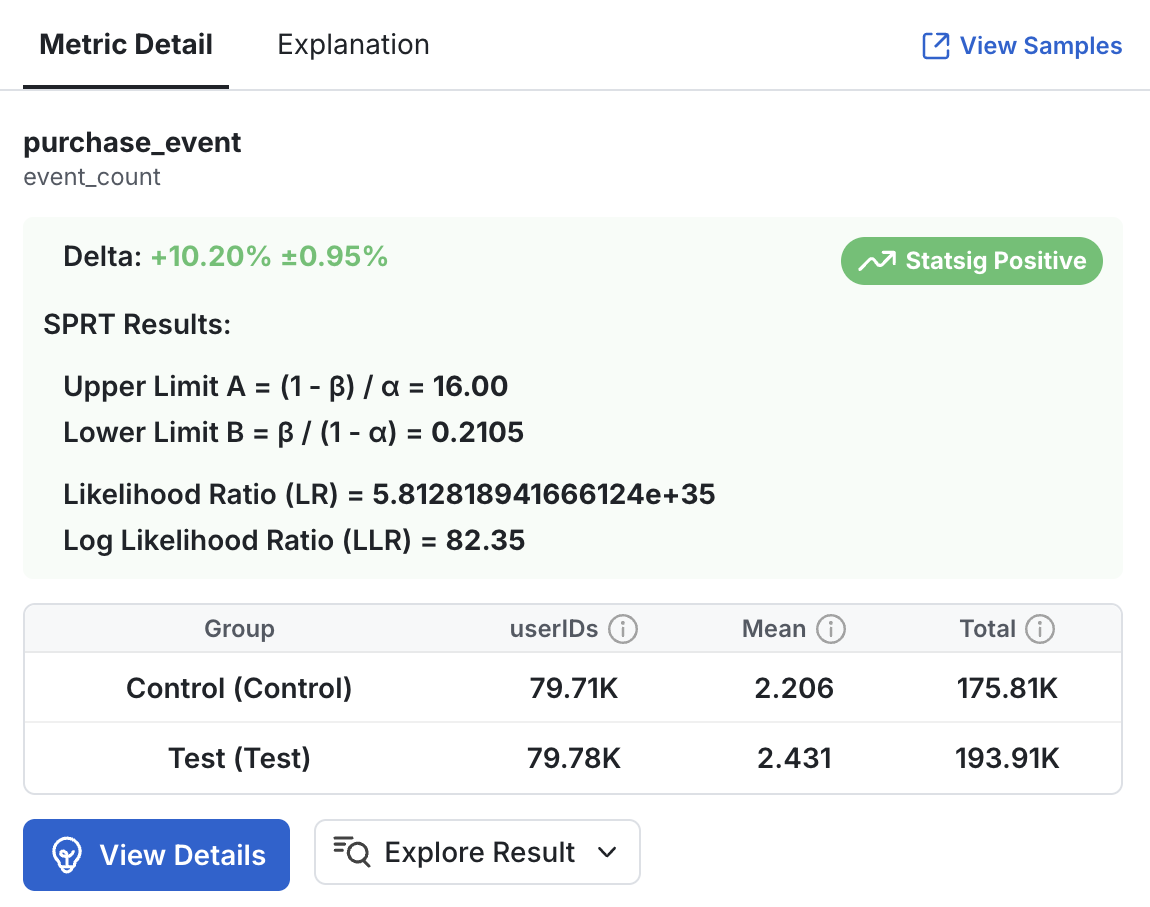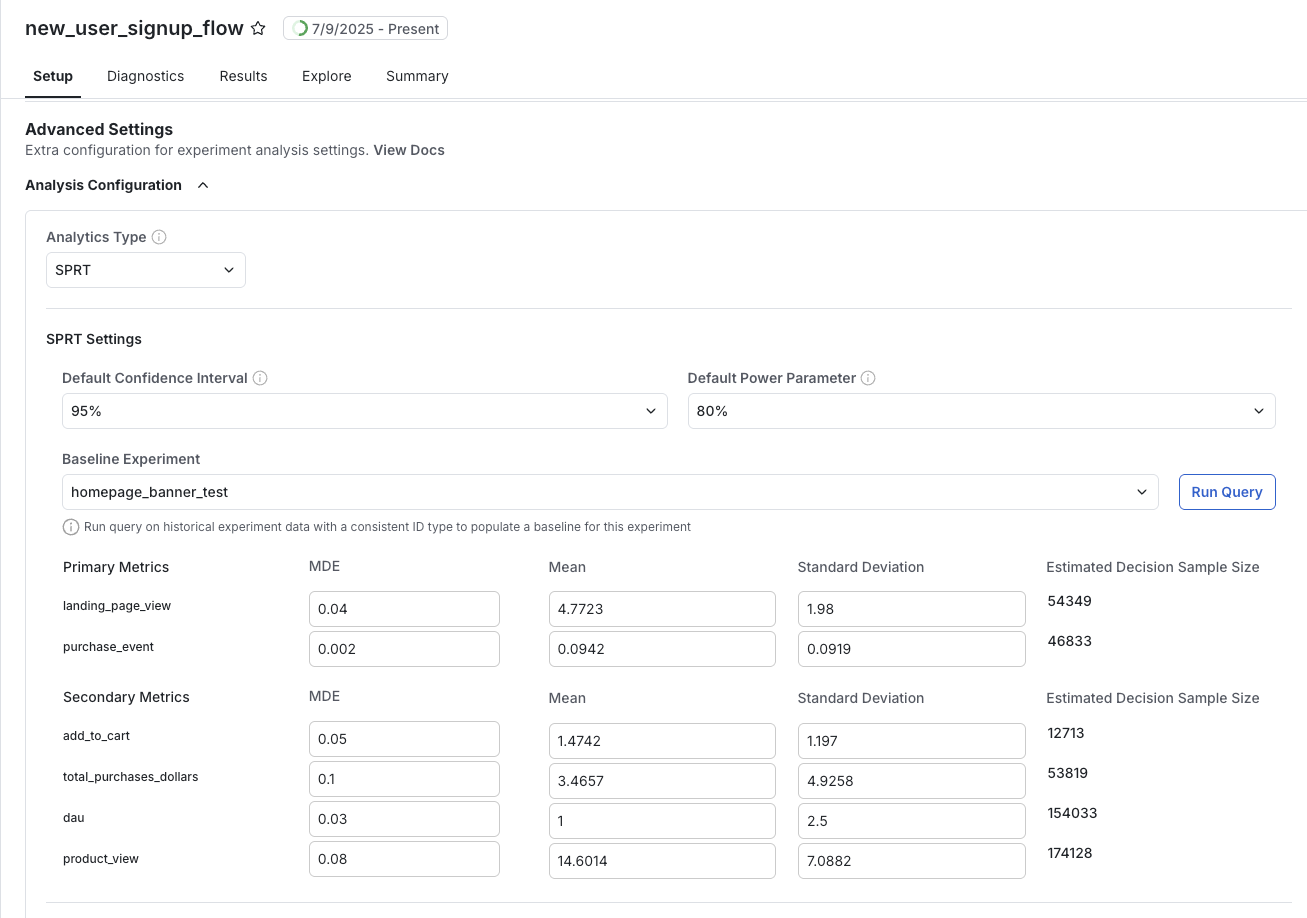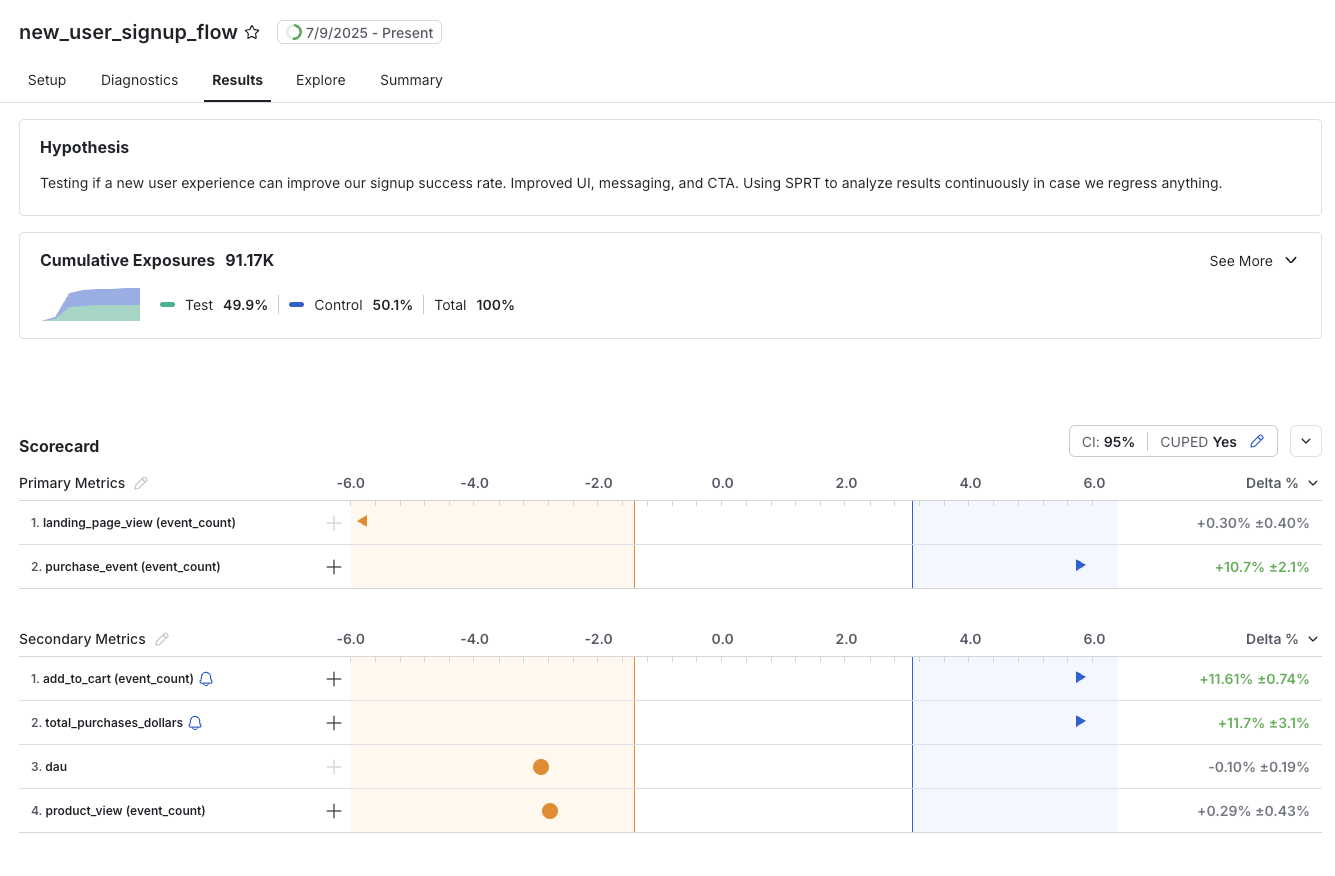What is SPRT?
The Sequential Probability Ratio Test (SPRT) is another, advanced methodology for running AB tests, differing from the traditional Null Hypothesis Significance Test (commonly called Frequentist analysis). SPRT can meaningfully improve time to decision for your experiments, including detecting unwanted metric regressions much faster. It also tends to be much easier to share results to stakeholders who aren’t super familiar with P-values and Significance levels. Lastly, SPRT has no penalties for peeking; there’s no need for sequential testing plans, Alpha spending, or CI-penalties as SPRT is built to be a sequential test methodology from the start.
Concepts
SPRT introduces a few key concepts that differ from standard Frequentist tests. At its core, SPRT relies on the Likelihood Ratio (LR) and Upper and Lower decision boundaries, A and B. The Likelihood Ratio estimates the relative difference in the likelihood of two outcomes:- Numerator: What you observe is due to an alternative hypothesis (you set) being correct.
- Denominator: What you observe is due to the null hypothesis being correct.
- A: If LR exceeds this upper threshold, you should accept the Alternative Hypothesis.
- B: If LR is less than this lower threshold, you should accept the Null Hypothesis.
- When LR falls into the range between these thresholds, no decision can be made and you should continue collecting data.

Why SPRT?
- Faster Decisions: SPRT allows you to reach conclusions more quickly, potentially reducing experiment run time.
- Intuitive Results: Instead of p-values, SPRT uses the Likelihood Ratio, a more intuitive measure of evidence for or against your hypotheses.
- Sequential Analysis: Data is continuously evaluated as it is collected, allowing for early stopping when sufficient evidence is reached. There’s no penalty for “peeking” in SPRT experiments.
- Clear Outcomes: SPRT enables you to confidently accept either the Null or Alternative hypothesis, rather than just “rejecting the null.”
- Data-Informed: Statsig’s implementation uses your past data and power analysis to inform the likelihood calculations and decision thresholds.
Comparing SPRT to other analysis methods
| Category | Frequentist | Bayesian | SPRT |
|---|---|---|---|
| Test Statistic | P-value: Probability of observing the results that is as extreme as the sample data if the null hypothesis is true | Posterior Probability: Probability of Test better than Control given the observed data and your prior information | Likelihood Ratio: Comparing the goodness of fit of two competing statistical models |
| Decision Threshold | Alpha (Industry standard 5%) | Posterior Probability and Credible Intervals | Upper & Lower Decision Boundary decided based one the alpha and beta you picked |
| Decision Framework | Reject/Fail to Reject the Null based on if p-value > 5% | Whether chance to beat control exceeds the pre-set decision threshold | Accept the Null Hypothesis, Accept Alternative Hypothesis, Or Continue based on the comparison of calculated likelihood ration with Upper/Lower Decision boundary |
| Allows Peeking | Yes, but with Sequential Testing Penalties | Yes, Unlimited | Yes, Unlimited |
| Requires Pre-Setup | Yes, requires sample size calculation based on historical metric mean and MDE | Optional, but you can define prior distribution per metric if you have previous knowledge which can accelerates the experiment or correct surprising results | Yes, requires historical information about each metric as well as MDE |
| Allows 1- and 2-Sided tests | Yes, per metric | Yes, per metric | Yes, per metric |
How to Use SPRT in Statsig
Enabling SPRT: Select SPRT as your analysis method when setting up an AB test in the Statsig console.

Computing SPRT Results
Statsig uses an updated version of Hajnal’s two-sample t test, as modified by Derek Ho of Atlassian (ref TBD), in our SPRT calculations. On each day, compute the following for a comparison between any two groups A and B for a specific metric: where:- is the PDF of a normal distribution of shape evaluated at
- is the observed Z-statistic between the groups
- is derived from Cohen’s d set prior to the experiment for the particular metric being considered
- and are the number of observed units for each group
Power Analysis & Setting Cohen’s d
SPRT requires that a value of Cohen’s d be set prior to the start of the experiment for each metric being evaluated. Setting the parameter requires three components:- MDE: An Minimum Detectable Effect desired to be measured, in units of percent
- Mean: A baseline average value for the metric,
- Standard Deviation: A baseline standard deviation for the metric,
Estimating the decision sample size
While Cohen’s d is used to compute your experimental results after the experiment starts, it can also be used to estimate the duration of an experiment in advance. Given SPRT allows users to look at results as often as desired, this is not the same as a “required sample size” in traditional frequentist testing. The Decision Sample Size is an estimate of the number of samples that will be sufficient for SPRT result for a metric to exceed either threshold and accept one of the hypotheses. Given: Then, the total number of expected units at decision time is:References
- Original SPRT Paper (Wald, 1945)
- The Sequential Probability Ratio t Test (Schnuerch & Erdfelder, 2020)
- A two-sample sequential t-test (Hajnal, 1961)
FAQ
Can I use SPRT for all experiments?SPRT is best suited for experiments where you want faster, sequential decisions and are comfortable with likelihood-based inference. For some experiment types, traditional methods may still be preferable. How does SPRT affect experiment duration?
SPRT can reduce experiment duration, especially when there is strong evidence for or against an effect. However, if the effect is small or data is noisy, the test may run longer. What are the limitations?
SPRT requires careful setup of thresholds and assumptions. It is not a drop-in replacement for all frequentist methods, and may not be suitable for all experiment types. Is SPRT the same as Sequential Testing? SPRT is different from our Sequential Testing option. Sequential Testing adjusts your Frequentist analysis method to allow repeated looks (i.e. “peeking”). SPRT is a completely separate experimental procedure and decision framework. They both allow for continuous “sequential” looking at experiment results, but otherwise they are separate methods for designing and running an A/B test.

